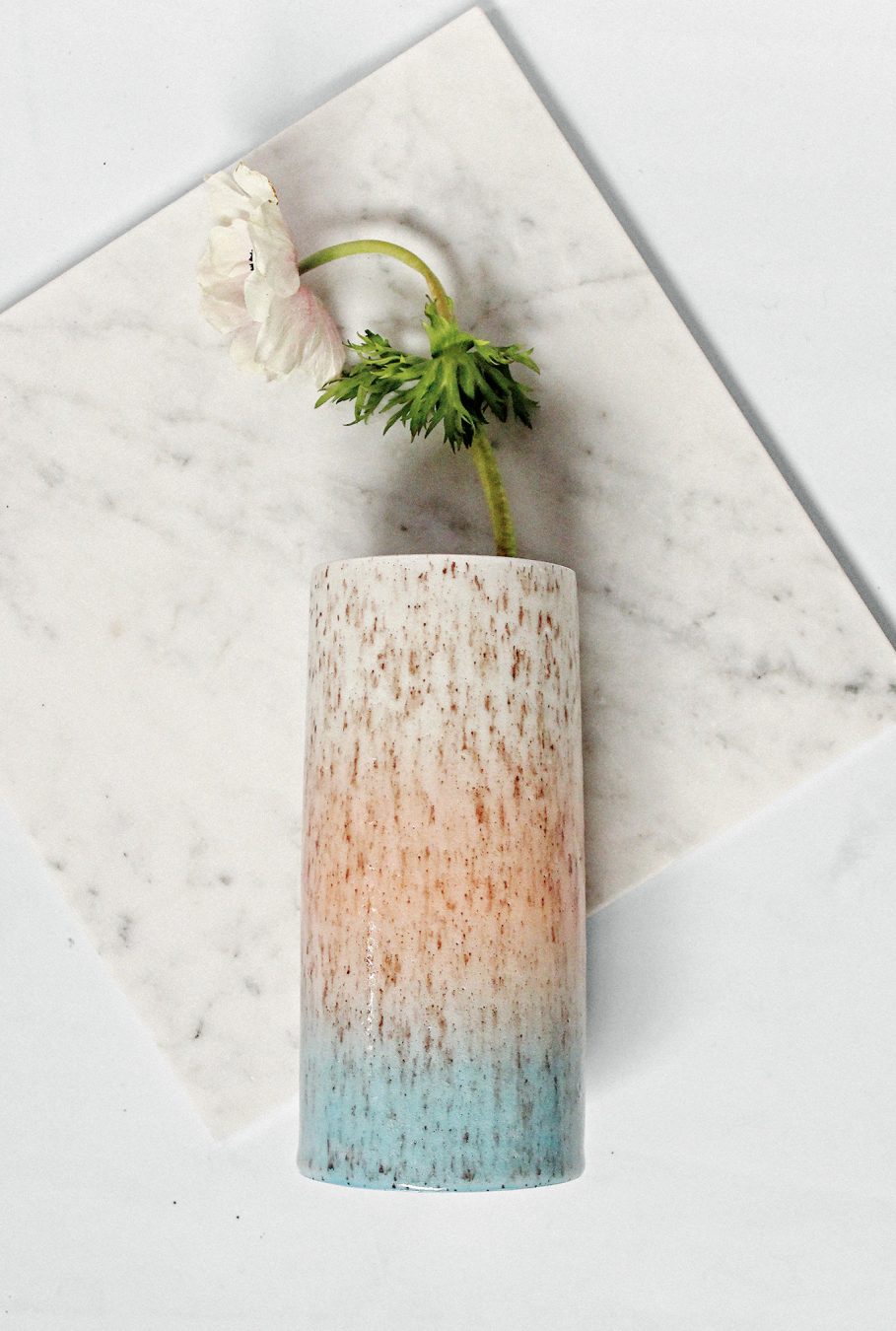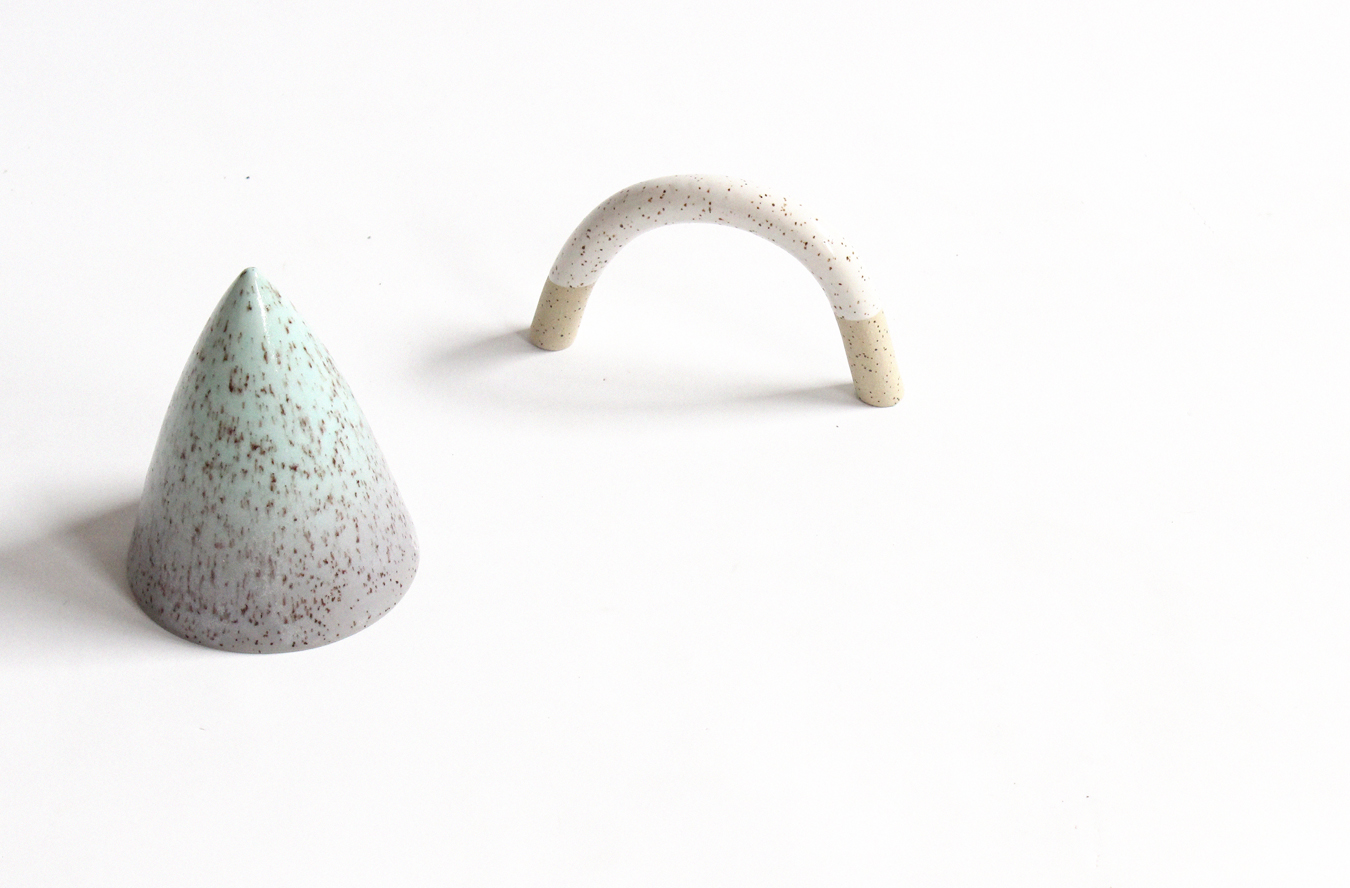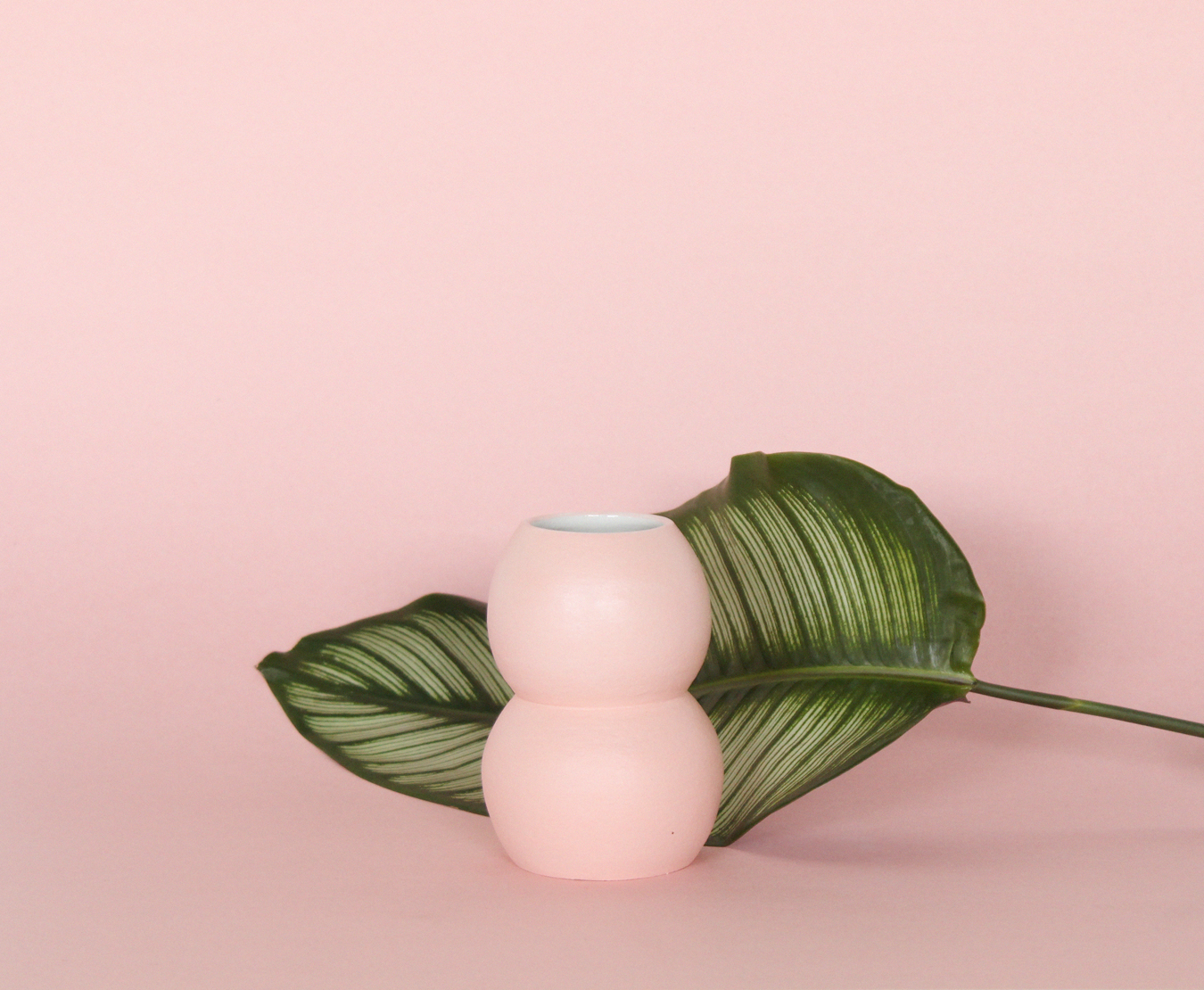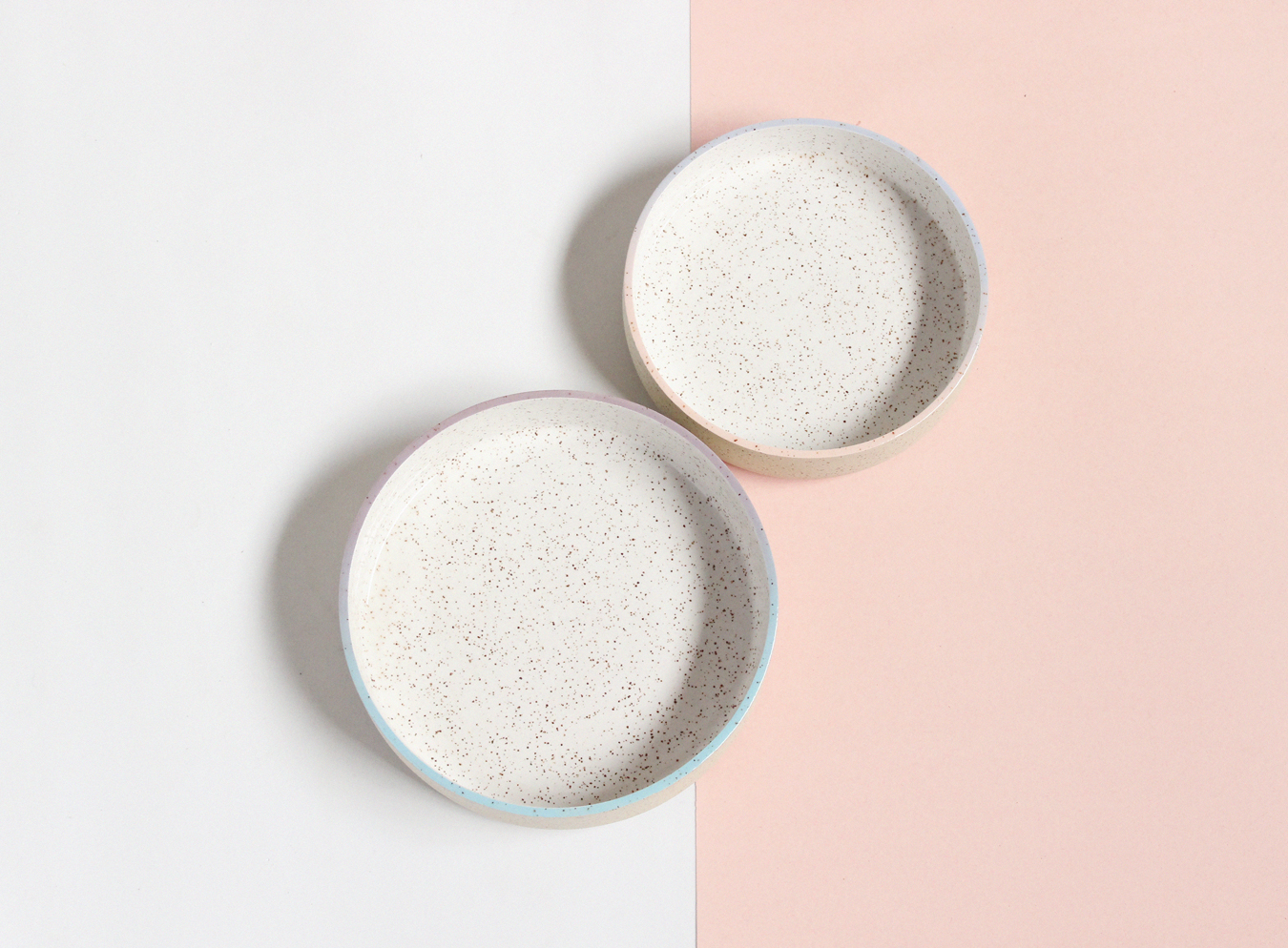There was a time, not too long ago, when ceramics were considered relics. Relegated to the dusty bowels of china cabinets, the clunky dishes served as monuments to a time when curly parsley could lend an elegant helping hand to mud-coloured plates.
However, in a most unexpected revival, ceramics and their craftsmen are experiencing a new place at the dinner table. And sitting in the head chair is Lindsey Hampton, a Vancouver-based ceramicist whose geometric pastel-coloured vases, plates, mugs, and pieces-in-between are almost unrecognizable as the aforementioned “pottery”. Gone are droopy lips and earthen colours, swapped instead for sharp right angles and multicolour ombre. Hampton first took a Claytek pottery studio ceramics class (a Christmas gift from her parents) five years ago, but it wasn’t until about two years ago that she really started taking it seriously. And in that short amount of time, she has certainly proved to be a star pupil. Recently named by The New York Times as part of a group of people who are redefining the art, and sporting stockists across North America with locations in the United Kingdom and Australia, Hampton’s kiln is red hot.
It’s easy to consider her work to be a break from tradition, but with only a handful of years of experience in the medium, it’s perhaps more apt to say the artist never really had a connection to it. “I think it made me think about it on my own terms,” Hampton says of her style, from her remarkably un-dusty Mount Pleasant studio. “Even when I first started, even the first few things I made, I mean obviously they were bad because they were the first things I made, but I remember thinking, ‘Oh, I need to glaze these brown because that’s what ceramics look like,’ and it kind of took me a long time to get out of what I knew of the art and just make things how I wanted them to be made.”
Gone are droopy lips and earthen colours, swapped instead for sharp right angles and multicolour ombre.
Prior to the spring of 2014, Hampton attributed her full-time occupation to graphic designer, a background that comes through pixel-clear when re-admiring the geometric elements and the liberal but controlled application of colour in her work. Hampton, like many creatives who favour an all-black wardrobe, has a complicated relationship with colour. “I think the pastels were kind of my compromise, my own internal compromise—just using pastels and light colours was how I was able to be okay with so much colour,” she explains. “I appreciate colour, but I’m making things for someone else, sort of: someone who’s much bolder than me and loves having colour in their home. Sometimes I make things that have a lot of colour and I think, ‘Who would like this? Who is this for?’” With tens of thousands of Instagram followers, Hampton might not have an exact number, but even a ballpark estimate is looking pretty rosy. For her, social media is perhaps the key culprit in her medium’s recent rise. “It’s easy to say that it’s a backlash to mass-produced consumer culture, but I actually don’t know if that’s true,” she says. “I just think that it’s really, really easy for people’s work to be seen now. You can take one class and make three things and put them on the Internet, and thousands of people can see them and like them.”
Although Hampton’s success has been swift and aided by her use of the Internet, ceramics are still a notoriously fickle medium. A heavy, tooth-chipping mug can be achieved by the owner of the most popular of feeds, but Hampton’s light and consistent work elevates her far beyond the novice category. “I like the hard angles and sharp lines. That’s another thing I don’t even think about—that’s just how I make things,” she explains. “It’s a tricky medium in which to be precise; it doesn’t want to be precise all the time, so it’s challenging.” For now, she is letting the form take its own shape. “It was a very organic accident, ending up here,” she says. It is a good bet, however, that Hampton will throw in an unexpected right angle just to keep things interesting.
_________













